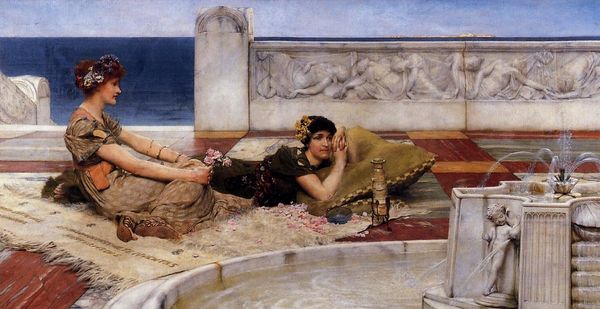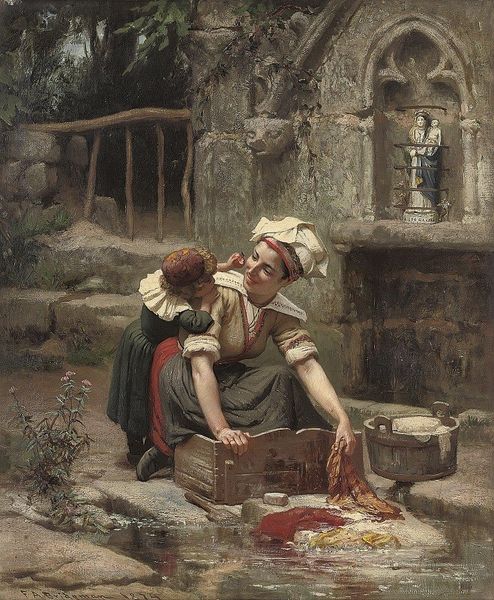
Copyright: Public domain
Henryk Siemiradzki painted 'Seller of Vases' using oil on canvas sometime in the late 19th century. The painting's composition is dominated by horizontal and vertical lines that lend a sense of classical stability to the scene. The colour palette, awash in warm earth tones and muted blues, creates a serene atmosphere, reminiscent of a tranquil Mediterranean afternoon. Siemiradzki uses a formal arrangement to explore themes of commerce and beauty. The seller, positioned centrally, offers his wares to the women. This creates a visual triangle, drawing the eye from the seller to the vases and then to the women, underscoring a semiotic exchange. The very act of presenting and assessing the vases suggests a commentary on the aesthetic and economic values of art itself. The painting destabilizes fixed meanings of value, inviting us to question what constitutes beauty and worth. The idyllic setting and classical references evoke a sense of timelessness, yet the scene’s commercial nature grounds it in the realities of human interaction. Note, finally, how the gentle brushstrokes and soft lighting function not just aesthetically but as part of a larger cultural discourse on beauty, commerce, and human connection.
Comments
No comments
Be the first to comment and join the conversation on the ultimate creative platform.













